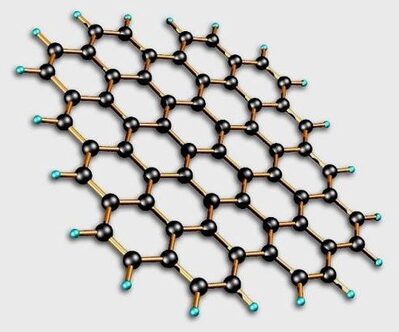
Grafene is a material composed of carbon atoms like diamond or graphite.
It distinguishes itself from other carbon-based materials because, in the molecular structure of graphene, atoms are arranged on a single plane and positioned at the vertices of a hexagon (in a honeycomb pattern).
Therefore, it is a material that has the thickness of a carbon atom, and due to this characteristic, graphene can be defined as the first true two-dimensional material; until now, all other materials had a three-dimensional geometry.
Research on graphene had been ongoing since 1958, but it was only in 2004 that two researchers from the University of Manchester, Konstantin Novoselov and Andre Geim, succeeded in isolating a single layer of graphene from graphite (this discovery earned them the Nobel Prize).Today, still using graphite as the raw material, the same as in pencil leads, several methods have been developed to produce graphene, such as:
The cost of graphene is still very high due to the significant energy consumption required for its production, and efforts are underway to find industrial processes capable of reducing it.
Characteristics of graphene:
Even though isolated in the laboratory for a short time, graphene now boasts numerous applications, especially as an additive to base materials of the product, despite its high cost.
The European Union believes strongly in the development of this material, so much so that it has allocated 100 million euros to fund research over the next 10 years.
ICEL, always attentive to innovations in materials that can enhance the quality and competitiveness of its cables, is assessing the potential applications that graphene could have in its sector.